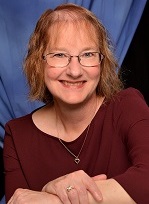BI-RADS®. What is it? Why is it used? This installment of “In the kNOW” explains BI-RADS® and how the FY2024 ICD-10-CM code updates included BI-RADS® designations to capture breast density information.
BI-RADS® stands for Breast Imaging Reporting and Data System®. It was developed in the late 1980s by the American College of Radiology, and is both a risk assessment and quality assurance tool. The system was developed to standardize the terminology for breast imaging (mammography, ultrasound, or MRI of the breast) to facilitate communication between the radiologist and the referring provider. The purpose is to have clear, concise communication and provide any recommendations necessary.
The BI-RADS® assessment categories are reported as 0-6. Descriptions and recommendations are provided in the table below.
Source: https://www.docpanel.com/blog/post/practical-guide-understanding-bi-rads
The density of the breast is captured by the BI-RADS® letter assigned.
A=almost entirely fatty
B=scattered areas of fibroglandular density
C=heterogeneously dense
D=extremely dense
Source: https://www.radiology.ca/article/what-are-dense-breasts/
Mammography reports that state
“dense breasts” mean that the patient has either heterogeneously dense or
extremely dense breasts.
In March of 2023, the Food and Drug Administration (FDA) updated mammography regulations that will take effect in September of 2024 which include reporting the density of patients’ breasts. The FY2024 ICD-10-CM codes were updated to capture this information by creating subcategory R92.3 Mammographic density found on imaging of breast.
R92.30 Dense breasts, unspecified
R92.31 Mammographic fatty tissue density of
breast
Breast Imaging Reporting and Data System (BI-RADS): A
Breast Imaging Reporting and Data System (BI-RADS): 1
R92.311
Mammographic fatty tissue density, right breast
R92.312
Mammographic fatty tissue density, left breast
R92.313
Mammographic fatty tissue density, bilateral breasts
R92.32 Mammographic fibroglandular density of
breast
Breast Imaging Reporting and Data System (BI-RADS): B
Breast Imaging Reporting and Data System (BI-RADS): 2
R92.321 Mammographic fibroglandular density, right breast
R92.322 Mammographic fibroglandular density, left breast
R92.323 Mammographic fibroglandular density, bilateral breasts
R92.33 Mammographic heterogeneous density of
breast
Breast Imaging Reporting and Data System (BI-RADS): C
Breast Imaging Reporting and Data System (BI-RADS): 3
R92.331 Mammographic heterogeneous density, right breast
R92.332 Mammographic heterogeneous density, left breast
R92.333 Mammographic heterogeneous density, bilateral breasts
R92.34 Mammographic extreme density of breast
Breast Imaging Reporting and Data System (BI-RADS): D
Breast Imaging Reporting and Data System (BI-RADS): 4
R92.341 Mammographic extreme density, right breast
R92.342 Mammographic extreme density, left breast
R92.343 Mammographic extreme density, bilateral breasts
Now you are In the kNOW!!
About the Author
Dianna Foley, RHIA, CHPS, CCS, CDIP, is an HIM professional with over 25 years of experience. She earned her bachelor’s degree from the University of Cincinnati and holds RHIA, CHPS, CDIP, and CCS certifications from AHIMA, along with being an AHIMA-approved ICD-10-CM/PCS trainer. Dianna has held many positions in HIM and is now an independent coding consultant. She previously served as the program director for Medical Coding and HIT at Eastern Gateway Community College. Dianna is an AHIMA-published author and has volunteered with AHIMA on projects including certification item writing, certification exam development, coding rapid design, and most recently has served on AHIMA’s nominating committee. She is a presenter on coding topics at the national, state, and regional levels and serves as OHIMA’s Education Coordinator. Dianna mentors new AHIMA members and also provides monthly educational lectures to coders and clinical documentation specialists.




